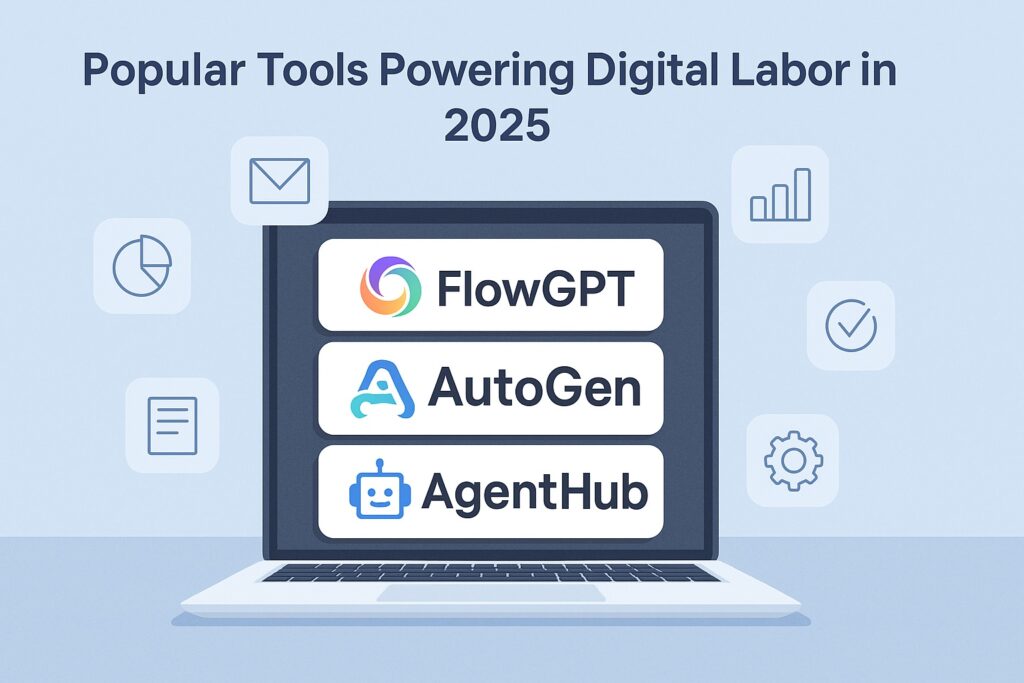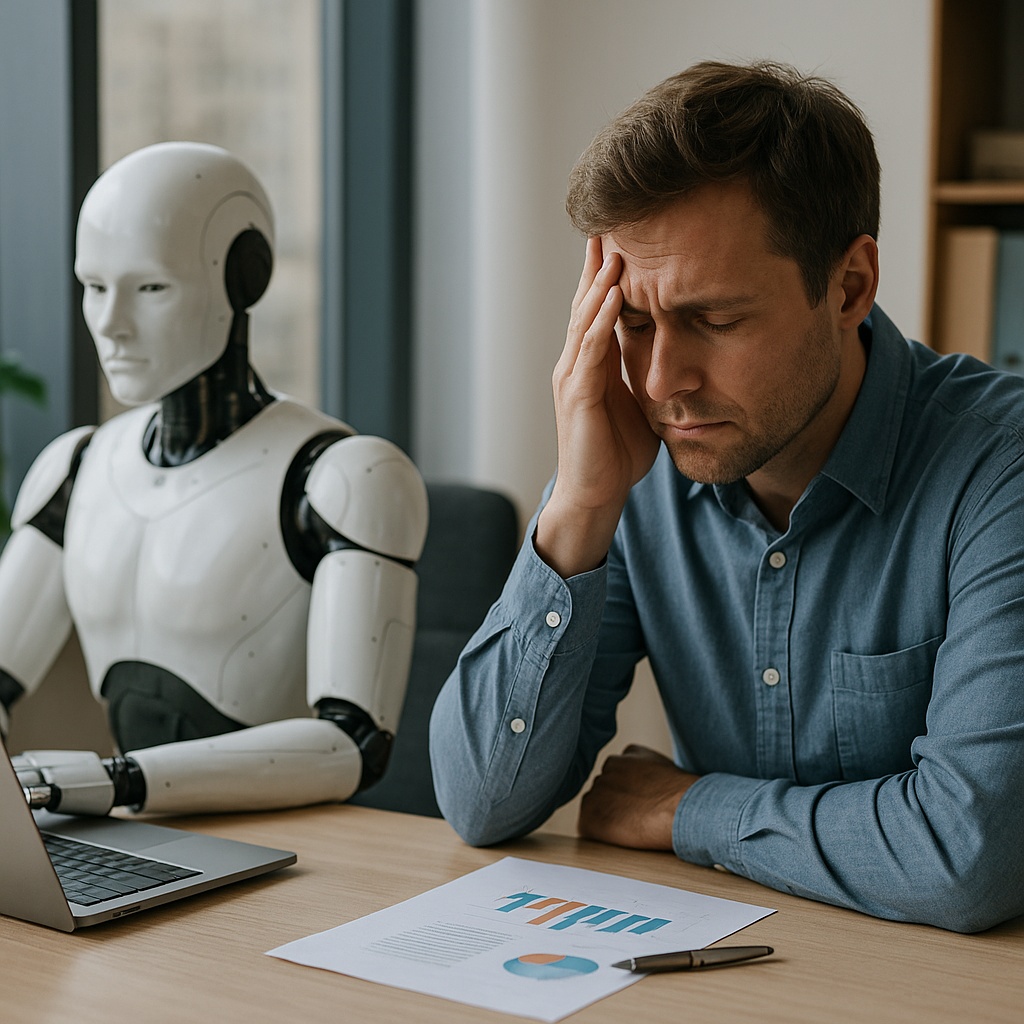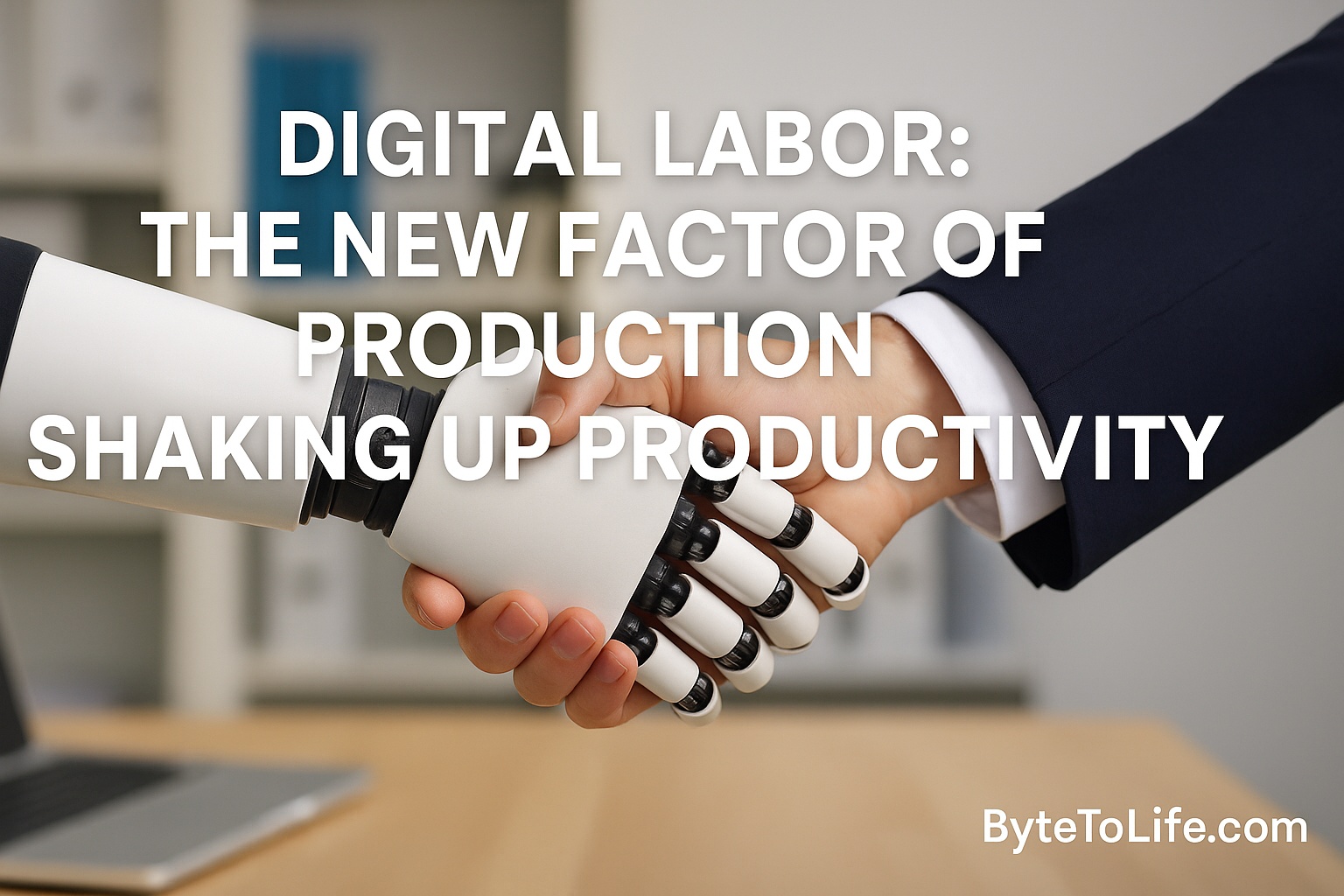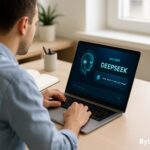For decades, productivity has been measured by the contributions of three classic factors: labor, capital, and technology. But with the explosive advancement of artificial intelligence, a radical new concept is emerging—digital labor as a distinct and measurable input in production. Could AI itself now be considered a standalone labor force, reshaping the economic foundations of productivity?
What Is Digital Labor?
Coined by researchers like Farach, Cambon, and Spataro in a recent arXiv paper, the term “digital labor” refers to the computational work performed by AI agents—chatbots, autonomous systems, AI developers, digital workers—that execute tasks previously done by humans. These agents don’t just assist humans—they replace or augment them in key business processes.
Why It Matters: The Shift from Assistants to Autonomous Workers
- AI is no longer just an assistant. It’s performing end-to-end workflows—writing code, managing marketing, summarizing meetings, and analyzing large data sets independently.
- Firms now invest in AI not as tools, but as operational “staff”—complete with performance metrics, deployment strategy, and maintenance budgets.
- This fundamentally shifts how we think about workforce productivity and resource allocation.
The Classical Economic Model: A Quick Recap
In economics, productivity was historically a function of:
- Labor – human effort and time.
- Capital – physical tools, infrastructure, or funding.
- Technology – knowledge or methods increasing efficiency.
However, the classical model treats automation as a tool—not an active labor force. But what happens when AI becomes capable of autonomously producing output?
Introducing Digital Labor as a New Production Factor
Recent studies suggest we must now quantify AI contributions as an independent input. Some economists propose adding “Digital Labor” to the traditional production function. This includes:
- AI-generated reports, designs, or campaigns without human initiation.
- Code written and tested by AI without oversight.
- Predictive analytics models managing customer decisions in real-time.
Real-World Implications in the Workplace
Organizations have begun to treat AI as a workforce entity, not just a tool. Some tangible changes include:
- Budgeting AI: Companies allocate funds specifically for AI workflows, licenses, training data, and infrastructure.
- Hiring Metrics: Instead of just hiring people, teams “recruit” AI agents with specific capabilities.
- Governance: Digital labor brings up questions of accountability, monitoring, and compliance—especially in finance, healthcare, and law.
Examples of Digital Labor in Action
A range of cutting-edge platforms and businesses are now showcasing the digital labor model in real-world applications:
- Haystack: Autonomous RAG (retrieval-augmented generation) agents performing enterprise search and customer support.
- Inferex: End-to-end AI pipeline orchestration without human ML engineers.
- HyperWrite Agents: Autonomous agents scheduling meetings, replying to emails, and generating documents daily.
Challenges of Measuring Digital Labor
Digital labor presents new measurement challenges:
- Productivity Attribution: How do we separate AI’s output from the human supervisor’s input?
- Ownership & Control: Who is liable when AI makes a mistake or creates biased output?
- Ethical Labor Questions: Is digital labor exploitative, sustainable, and aligned with human goals?
Policy, Regulation, and Labor Displacement
This new form of labor may require fresh labor laws, digital workforce taxation, and economic reporting standards. Is it time to impose taxes on AI-driven work the same way we tax human labor? Who benefits from its productivity gains?
Forecast: A Future of Hybrid Teams
In the next five years, most productive teams won’t just be human—they’ll be hybrid. A digital worker may complete 60% of a report, while a human adds final analysis and creativity. Recognizing AI’s value will mean training humans to collaborate, not compete, with digital labor.
Case Study: How a SaaS Company Cut Costs Using Digital Labor
One mid-sized SaaS company in the CRM space recently deployed AI agents to automate tier-1 customer support and basic onboarding tutorials. Within three months:
- Support volume fell by 42%, giving human agents more bandwidth to resolve complex inquiries.
- Customer satisfaction scores rose by 15% due to faster response times.
- Annual savings from reduced staffing costs exceeded $600,000.
More importantly, the company did not lay off employees—instead, they reallocated talent to customer success and enterprise sales, driving further growth.
The Role of Digital Labor in Startups vs. Enterprises
Startups and enterprises both benefit from AI-powered digital labor, but in different ways:
- Startups: Use digital labor to punch above their weight—handling marketing, customer service, analytics, and basic coding without hiring big teams.
- Enterprises: Integrate AI to drive efficiency across massive operations, replacing or augmenting workflows to reduce redundancy and scale.
In both cases, digital labor acts as a productivity multiplier—doing more with less while enabling innovation.
Popular Tools Powering Digital Labor in 2025

Here are a few standout platforms driving the digital labor movement this year:
- FlowGPT: Workflow-based automation for GPT-powered agents in business environments.
- AutoGen: A framework from Microsoft for building multi-agent systems that collaborate on tasks.
- AgentHub: No-code AI agents tailored for teams and small businesses.
These platforms enable non-developers to deploy digital labor into their everyday workflows—democratizing access to AI productivity.
Future-Proofing Your Career in the Age of Digital Labor
Whether you’re a software engineer, marketer, or business leader, your future role will be shaped by digital labor. Here’s how to stay ahead:
- Learn to prompt and supervise AI systems effectively.
- Focus on uniquely human strengths—empathy, creativity, strategy.
- Understand AI fundamentals—even if you’re non-technical.
- Advocate for transparent, fair, and ethical use of AI in your organization.
Digital labor won’t make humans obsolete—but humans who work with digital labor will replace those who don’t.
How Businesses Are Rethinking ROI in the Age of Digital Labor
Traditionally, return on investment (ROI) has been calculated based on labor costs, time, and profit margins. However, the introduction of digital labor significantly alters the cost dynamics. Businesses now factor in:
- Development time: How long it takes to train or deploy an AI system.
- Maintenance & upgrades: Keeping digital labor current and aligned with business needs.
- Scalability: Unlike human workers, digital labor can often scale instantly without additional cost.
This shift requires new financial models to measure how AI contributes to growth—not just by cutting costs, but by enabling entirely new revenue streams through automation and speed.
The Psychological Impact on Human Workers

As AI agents become coworkers, many employees are experiencing a mix of relief, anxiety, and confusion. Key concerns include:
- Job displacement fears: Workers worry about losing relevance.
- Skill gaps: Not everyone is trained to work alongside or supervise AI agents.
- Collaboration stress: Managing hybrid teams with digital labor can be confusing without proper workflows.
Organizations need to invest in training, clear communication, and wellness programs to ensure humans thrive in AI-augmented environments.
Digital Labor and the Global Talent Market
In the past, companies outsourced work to other countries to reduce costs. Today, some are replacing entire outsourcing operations with AI. This has profound implications:
- Near-zero marginal cost of output: Once trained, digital labor can produce unlimited output with minimal additional investment.
- Competition with humans globally: Entry-level roles may be most at risk, especially in content creation, data entry, and customer support.
- New job creation: Ironically, digital labor may also spur new human roles—AI operations managers, prompt engineers, or ethical auditors.
Ethical and Societal Questions Around Digital Labor
As AI systems become embedded in every aspect of work, ethical considerations intensify:
- Transparency: Should users know when they’re interacting with AI instead of a human?
- Bias & fairness: Can digital labor be audited for bias in decision-making?
- Ownership of output: Who owns content or code created entirely by AI?
Governments, businesses, and civil societies must collaborate to set ethical standards, just as they once did for human labor rights.
Preparing Your Business for the Era of Digital Labor
To thrive in this new landscape, leaders must:
- Evaluate which parts of their workflow can be automated safely.
- Upskill staff to work collaboratively with AI tools.
- Invest in secure, explainable, and ethical AI systems.
- Develop KPIs and success metrics for both human and digital workers.
It’s not about replacing people—it’s about reimagining how work gets done.
Frequently Asked Questions (FAQ)
Digital labor refers to the work performed by AI systems or autonomous agents that contribute to business outcomes without direct human input.
Traditional automation follows static rules. Digital labor adapts, learns, and performs intelligent tasks dynamically—like a human coworker.
It can replace some tasks, but more often it complements humans—enabling them to work faster, smarter, and more creatively.
They track time savings, cost reductions, increased output, and improvements in quality or customer satisfaction metrics.
Ethics depend on transparency, responsible use, fair outcomes, and keeping humans in the loop where it matters most.
Sectors like finance, tech, marketing, logistics, and SaaS use digital labor for speed, scalability, and data-driven decision-making.
Upskill in prompting, critical thinking, and AI collaboration. Human-AI hybrid teams are the future of high-performance work.
Final Thoughts: The Evolution of Work Is Already Here
Digital labor isn’t coming—it’s already embedded in countless workflows, from marketing campaigns written by AI to enterprise dashboards generated without a single line of human code. As companies adapt to this shift, the question isn’t whether to adopt AI, but how to do it responsibly, strategically, and equitably.
For business leaders, this means reimagining your organization’s operating model. Who “works” for your company? If your most productive team member is an AI agent working 24/7, how do you measure its impact? How do you ensure fairness and accountability?
The way ahead holds just as much significance for individuals. Learning to work alongside digital labor—whether that means prompting effectively, auditing outputs, or guiding AI with context—will be one of the most valuable skills in the 2025 economy. Soft skills like critical thinking, judgment, and storytelling become even more essential when machines handle the grunt work.
We are witnessing the birth of a new labor category, one that challenges assumptions about value creation, performance, and employment. The businesses that succeed will be those that learn to blend human talent with digital precision, emotional intelligence with automation, and vision with execution—at scale.
Want to Stay Ahead?
At ByteToLife.com, we track the most important shifts in digital productivity, AI, and the future of work. To explore related articles, check out:
- AI Tools Transforming Office Tasks
- Agentic AI & Autonomous Digital Workers
- DeepSeek: Productivity Superpower or Risk?
Don’t miss out! Subscribe now for weekly tips, trends, and insights. The age of digital labor is just beginning—make sure you’re not left behind.



